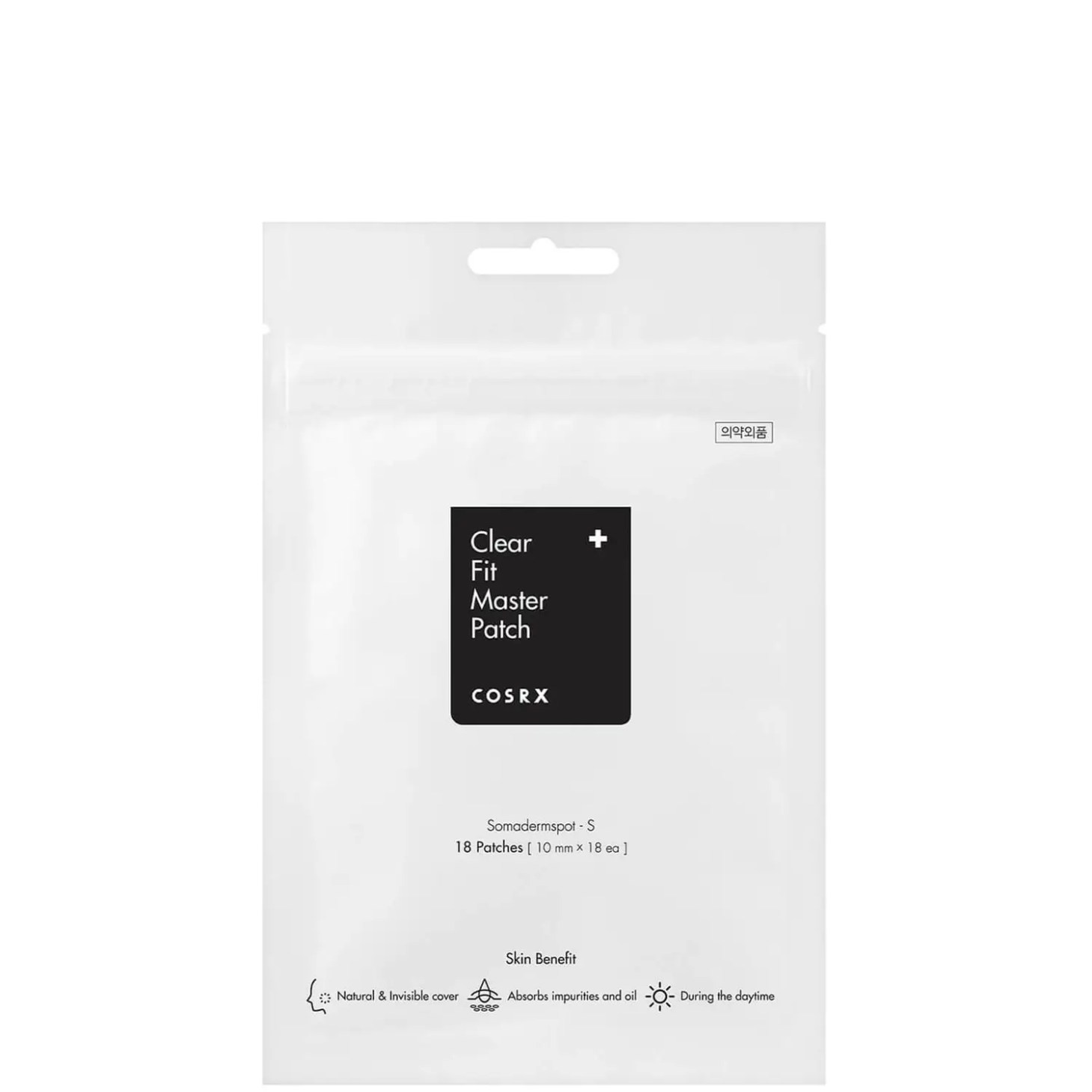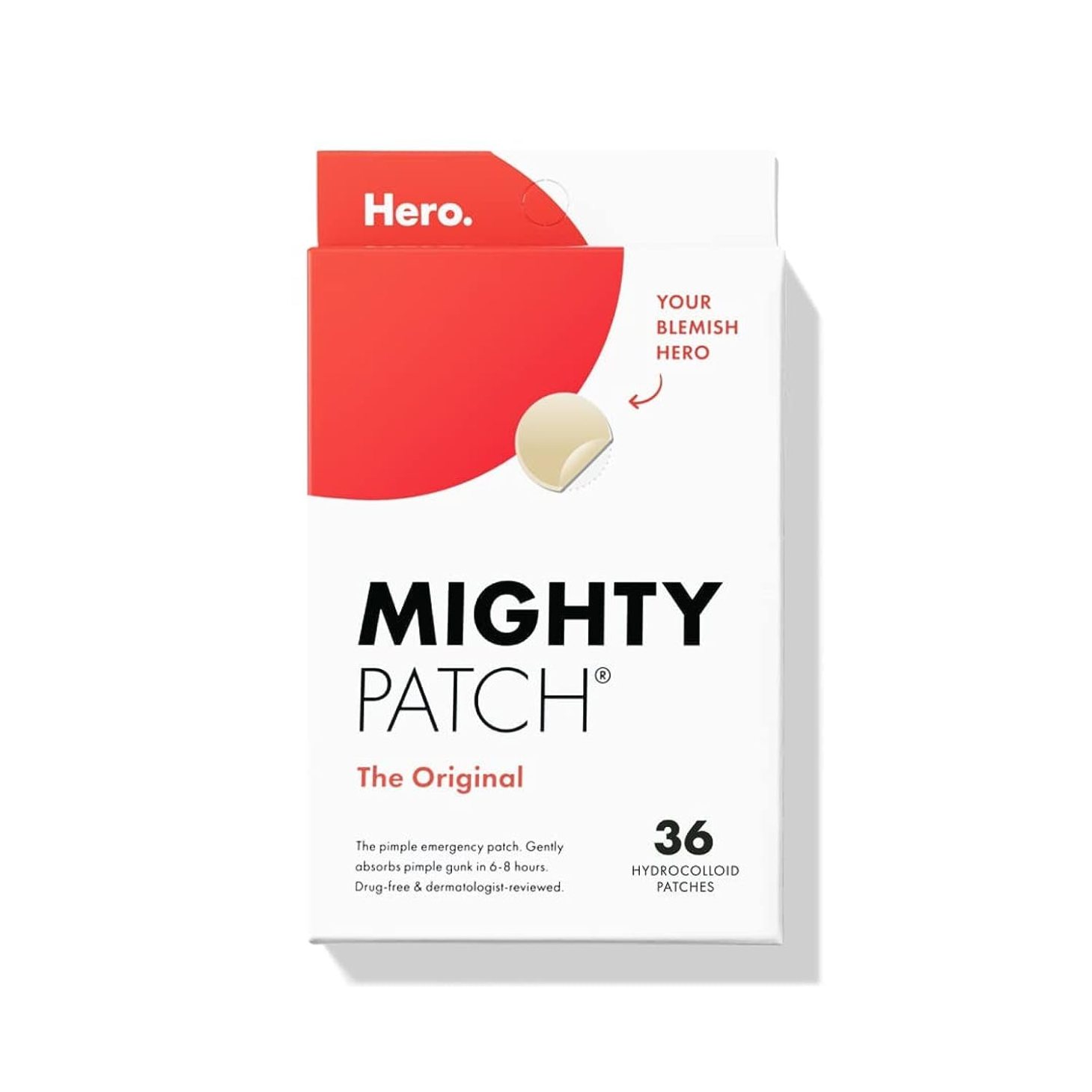How Long Should You Actually Leave on That Acne-Busting Hydrocolloid Patch?
There's nothing worse than a giant pimple popping up out of nowhere. Before the invention of the pimple patch, the primary course of action when treating sudden pimples was slathering on some cream and impatiently waiting as it dries out—but with pimple patches, your zit can vanish in record time. There are a few things you should know about hydrocolloid patches before leaving them on your skin for hours on end, though.
- Brooke Jeffy, MD, board-certified dermatologist and founder of BTWN, a skin-care line specifically formulated for children, tweens, and teens
- Dendy Engelman, MD, FACMS, FAAD, board-certified dermatologic surgeon based in New York City
- Geeta Yadav, MD, board-certified dermatologist and founder of FACET Dermatology
As long as you stick to a few basic rules, you'll be rocking your pimple patch worry-free. Ahead are some pimple patch best practices that dermatologists recommend, including the lowdown on how long you should wear an acne patch, how they help pimples heal, and which are the best pimple patches. Sorry, zits–you don't stand a chance!
What is a pimple patch?
A pimple patch is a facial sticker that is placed on top of a pimple for anywhere from six to 12 hours. Pimple patches work their magic due to the hydrocolloid's ability to attract the zit's fluid to the surface of your skin like a magnet (gross, yes, but totally satisfying).
{{post.sponsorText}}
Pimple patches come in many styles and shapes. While most pimple patches are simply made of hydrocolloid, a type of water-attracting wound dressing, some others come medicated with acne-fighting active ingredients like niacinamide, benzoyl peroxide, or salicylic acid.
Pimple patches a derm recommends:

Ingredients: Liquid paraffin, red ginseng water
If you still want to wear makeup while donning a pimple patch, Dr. Yadav recommends this option from COSRX. Formulated with liquid paraffin, which relieves irritated skin, and red ginseng water, an anti-inflammatory agent, these super-thin patches sit flush with your skin.
“These are special because of their very thin, close-to-the-skin design,” says Dr. Yadav. “They’re thin enough that you can wear them under makeup if you wanted to, which will protect your pimple from further congestion while helping to heal the skin underneath.”

Ingredients: Hydrocolloid
Both Dr. Jeffy and Dr. Yadav recommend The Original Mighty Patch for treating pimples. Made of medical-grade hydrocolloid dressing and nothing more, these patches are simple, suited for all skin types, and clear, blending into all kinds of skin tones.
“These are great and very affordable,” says Dr. Yadav.
Do pimple patches really work?
Acting similarly to how a bandaid helps wounds heal, you can heal your pimple much quicker with a pimple patch than using a typical spot treatment: "The thin, clear hydrocolloid patch protects the zit from further irritation and infection by providing a 'sealed' environment for the skin to heal itself," says dermatologist Dendy Engelman, MD.
The benefits of pimple patches extend beyond removing dirt, oil, and pus, though. Pimple patches also provide some extra protection from UV rays and environmental factors like pollution and serve as a physical reminder to stop picking at your pimple, according to Dr. Geeta Yadav, MD, board-certified dermatologist and founder of FACET Dermatology. “This will reduce inflammation and expedite healing.”
“I love pimple patches,” says Brooke Jeffy, MD, board-certified dermatologist and founder of BTWN, a skin-care line for kids, tweens, and teens. “I recommend them and use them myself when needed. The only concern I have is if someone is trying to treat severe acne with them instead of seeing a dermatologist.”
Because of how well they get the job done, people tend to get excited and take a more-is-more approach, wearing their patches as long as it takes for that pesky pimple to disappear—in fact, one Redditor left hers on for 24 hours. But even if your pack of patches doesn't have a maximum time listed, there is a limit to ensure the product erases acne without hurting your skin in the process, and it's definitely not a full day.
How do I apply a pimple patch?
So you’ve got a brand new pack of pimple patches—now what? Ahead are three pimple patch best practices for applying them the *correct* way.
1. Cleanse your skin
Prior to putting on a pimple patch, you’ll want to make sure your skin is fully cleansed of any surface-level dirt, sebum, and bacteria.
"Applying it on dirty skin could allow bacteria to fester, making the issue worsen," says Dr. Engelman.
2. Peel the pimple patch and apply it to dry skin
In order for the adhesive to fully stick to your skin, make sure to fully dry the area prior to application. When you’re ready to apply it, peel the pimple patch from the sheet and place it directly over your pimple, pressing down lightly.
3. Remove after 12 hours
There’s no minimum acne patch duration, but most dermatologists recommend keeping it on for at least a few hours in order for it to be effective. The more time you leave it on, the more time your skin has to heal.
According to Dr. Engelman, whether you wear it overnight or during the day, you should never go over 12 hours. "The adhesive on that patch could potentially irritate over time," says Dr. Engelman. “And another thing that could cause problems? Not cleaning your skin beforehand.
Before removing an acne sticker from its backing, be sure to wash your hands thoroughly. After tossing the used pimple patch away, you can gently cleanse your skin and follow through with your usual skin-care routine.
Who shouldn’t use a pimple patch?
Because most pimple patches are only made of hydrocolloid dressings, almost anyone can wear them without encountering issues. “They can be used by pretty much everyone, so long as you don't have issues with adhesives,” says Dr. Yadav. “Anyone who has had allergic reactions to certain adhesives might not be a good candidate for using pimple patches. I'd recommend patch testing by applying one to the inner forearm to see if you react before applying one to your face.”
If your pimple patch contains active ingredients outside of the hydrocolloid dressing, be sure to consult with your dermatologist prior to use, especially if you have sensitive skin. And if your pimple is already popped, avoid immediately covering it with a patch. Trapping an opened-and-angry bleeding pimple under a pimple patch can reintroduce bacteria to the zit; a hydrocolloid patch can certainly speed up the healing time, but only if the area is clean. A good alternative is to use antibiotic ointment while your pimple begins to heal, then transition to a hydrocolloid patch after cleansing the skin.
While hydrocolloid patches are great, persistent cystic acne should be treated by a dermatologist, says Dr. Jeffy. Cystic acne can lead to scarring and oftentimes, require medical intervention in order to stop fully.
Pimple patch FAQs:
How long should I keep a pimple patch on?
There’s no minimum amount of time you should wear a pimple patch, but Dr. Yadav and Dr. Jeffy both recommend wearing them for at least six hours in order to allow them to work their magic. You can wear pimple patches for up to 12 hours; at that point, you’ll either want to remove the patch and let your skin breathe or replace it with a new one.
“I'd recommend wearing them overnight—you'll get the best results the longer you wear them,” says Dr. Yadav. “Beyond 12 hours, you'll want to remove it and put a fresh one on.”
Is it better to pop a pimple or use a pimple patch?
We get it—some pimples are just BEGGING to be popped, but according to Dr. Jeffy, you should let pimple patches do the extraction. Popping a zit can result in scarring and exposes vulnerable layers of the skin to bacteria, which can actually worsen it.
“Pimple patch over popping for sure,” says Dr. Jeffy. “I know how tempting it can be, but it is just not worth the risk of a scar.”
What is the white stuff on acne patches?
If you see a mound of white stuff underneath your pimple patch, it’s likely just water that has gotten trapped within the hydrocolloid. Hydrocolloid patches draw water from the skin and turn white after a period of time.
In some cases, it may also be the actual pus that’s been drawn out of your pimple, but in most cases, it’s simply hydrocolloid that’s hydrated.
Will a pimple go away without popping it?
Patience is a virtue, my friend.
More often than not, healing pimples is a waiting game, but some recurring pimples are more stubborn than others. “In many cases, an inflamed pimple will resolve on its own, especially if you don't exacerbate it by picking at it and introducing new bacteria with dirty hands,” says Dr. Yadav, “but some pimples, especially those in the case of severe acne, may necessitate dermatological intervention.”
If you’re dealing with a particularly painful pimple or one that has bloomed in an unusual spot—like an armpit pimple, a hairy zit, or a pimple inside your nose—make an appointment with a derm. Just because you shouldn’t pop premature zits doesn’t mean you have to be in pain, either.
Loading More Posts...